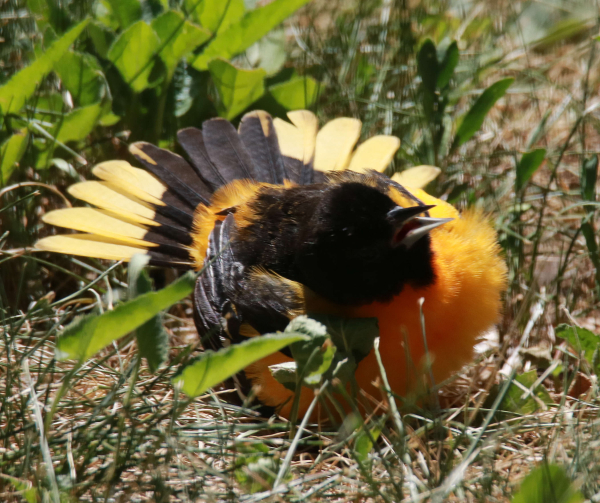 The hatch continues as the first Western Grebe hatchling was photographed riding on the back of one of the adults at a nearby lake.  An
|
 The hatch continues as the first Western Grebe hatchling was photographed riding on the back of one of the adults at a nearby lake.  An
|